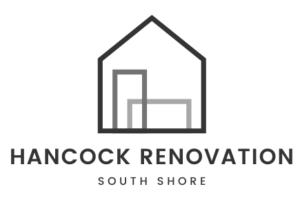A kitchen remodel is one of the most exciting yet financially significant home improvement projects you can undertake. The cost can quickly add up whether you envision sleek countertops, modern appliances, or a wholly reimagined space. That is why understanding how to finance a kitchen remodel is a crucial first step in turning your dream kitchen into reality.
You are not alone if you have been putting off a remodel because of financial uncertainty. Many homeowners struggle with deciding how to cover their expenses without feeling overwhelmed. The good news? Plenty of flexible options exist, from personal savings to home equity loans, credit cards, and specialized financing programs tailored for renovations.
In this guide, we will discuss the key financing options, their pros and cons, and tips to help you choose the best route for your needs. We will also provide insights into budgeting smartly and maximizing your investment while managing costs. Whether planning a minor update or a complete kitchen remodel, this article will help you feel confident about financing your remodel.
Financing Options for Your Kitchen Remodel
Financing a kitchen remodel can feel overwhelming, but there are multiple options to fit different budgets and needs. Whether you prefer to use cash, tap into savings, or explore borrowing options, each method has advantages and considerations. Below, we will explore the most common ways to finance your remodel and kitchen remodel tips to determine what’s right for you.
Paying in Cash
Paying in cash is the most straightforward way to finance a kitchen remodel. By using cash, you avoid interest payments and potential debt, ensuring your project stays within budget. This approach works well if you have been saving specifically for the remodel or can reallocate funds without impacting your financial stability. However, it requires careful planning to ensure you do not deplete emergency funds or savings for other goals. If you choose this route, consider asking for discounts from contractors or suppliers, as cash payments are often preferred for their simplicity and immediate value.
Leveraging Personal Savings
Using personal savings offers a balance between financial flexibility and avoiding debt. Unlike paying entirely in cash, this method allows you to allocate a portion of your savings while keeping some reserved for emergencies. It is an excellent choice if your remodel is relatively small or you have a well-stocked savings account. This approach avoids interest rates and financing fees but requires discipline to ensure you do not overspend. Before using savings, calculate your project costs carefully and leave a financial cushion for unexpected expenses.
Home Equity Loans and HELOCs
Home equity loans and home equity lines of credit (HELOCs) are popular options for funding significant remodels. These loans allow you to borrow against the equity in your home, often at lower interest rates than personal loans or credit cards. A home equity loan provides a lump sum upfront, while a HELOC functions like a credit line you can draw from as needed. Both options may offer tax benefits, but they come with risks—your home serves as collateral, so missed payments could lead to foreclosure. Evaluate your ability to repay before committing to this option.
Personal Kitchen Remodel Loans
Personal loans are an accessible and flexible way to finance a remodel, especially if you do not have significant home equity or savings. These unsecured loans do not require collateral, making them less risky for homeowners. They typically come with fixed interest rates and monthly payments, helping you manage your budget. However, interest rates can be higher than secured loans, depending on your credit score and financial history. Personal loans work best for medium-sized projects where you need quick access to funds without tapping into your home’s value.
Credit Card Payments
Using credit cards for a kitchen remodel can be convenient, particularly for smaller expenses or if you have a card with a high credit limit. Some credit cards offer introductory 0% APR periods, allowing you to pay off the balance over time without interest. However, credit cards often carry high interest rates once the promotional period ends, making them a costly option if you cannot pay off the balance quickly. This method is best for short-term financing or bridging a gap between savings and other financing options.
Contractor Financing Plans
Many contractors offer in-house financing plans to make remodeling more accessible. These plans typically include fixed monthly payments and may come with promotional interest rates or no-interest periods. Contractor financing is convenient, as it is tied directly to your remodeling agreement, but it’s essential to understand the terms fully. Compare the rates and fees with other options to ensure you get the best deal. While this option simplifies the financing process, choosing a reputable contractor with transparent terms is crucial.
Government Incentives and Rebates
Government incentives and rebates can reduce the overall cost of your kitchen remodel, especially if you’re incorporating energy-efficient appliances or eco-friendly materials. Federal, state, or local programs often provide rebates for installing energy-saving upgrades like LED lighting, efficient HVAC systems, or solar panels. Additionally, tax credits may be available for specific improvements, helping offset upfront costs. Research the programs available in your area and ensure your project meets eligibility requirements. When combined with other financing methods, these incentives can significantly lower your remodel’s total cost.
Cost-Saving Strategies to Manage Your Budget

Managing your budget is key to a successful kitchen remodel. Cost-saving strategies can help you achieve your dream kitchen without overspending. You can significantly reduce costs while maintaining quality by prioritizing upgrades, avoiding unnecessary expenses, and sourcing affordable materials. Below are practical ways to stretch your remodeling budget effectively.
Focus on Cabinet Refacing or Partial Upgrades
Instead of replacing all your cabinets, consider cabinet refacing to save money. This process involves updating the exterior of your cabinets with new veneers or doors, giving them a fresh look without the cost of complete replacement. Partial upgrades, like swapping out hardware or refinishing surfaces, can also modernize your kitchen at a fraction of the price. These options maintain functionality while cutting costs significantly. You can transform your space without overspending on unnecessary replacements by targeting high-impact areas for upgrades.
Minimize Structural Changes
Avoiding structural changes is one of the most effective ways to save money during a remodel. Relocating plumbing, electrical systems, or walls often requires extensive labor and materials, which can drive up costs. Instead, work with your kitchen’s existing layout and focus on cosmetic changes like new countertops, backsplashes, or lighting fixtures. This approach reduces the project’s complexity while achieving a fresh, updated look. Keeping structural changes minimal ensures you stay within budget and avoid unforeseen expenses.
Source Affordable Materials and Appliances
Finding affordable materials and appliances is crucial for managing costs. Look for sales, discounts, or clearance items at home improvement stores and online retailers. Consider purchasing gently used or refurbished appliances to cut costs without sacrificing quality. Explore cost-effective alternatives such as laminate, quartz composites, or luxury vinyl for materials like countertops or flooring. Research suppliers and compare prices to get the best deals. By being resourceful and selective, you can achieve a stylish kitchen while staying within your financial limits.
How Contractors Can Help With Financing Plans

Contractors often provide financing options to make kitchen remodels more accessible for homeowners. These plans can include installment payment agreements, promotional no-interest periods, or partnerships with third-party lenders. Working directly with a contractor simplifies the financing process, as they typically handle the paperwork and approvals.
Choosing a contractor with financing options allows you to start your remodel without waiting to save the full amount. Many contractors offer customized payment schedules to fit your budget, helping you manage costs over time. However, reviewing the terms carefully, including interest rates and fees, is essential to ensure they are competitive.
Additionally, contractors experienced in financing can guide you toward other resources, such as government rebates or loan programs, to further reduce costs. Their expertise in remodeling and financing helps streamline the process, ensuring you stay within budget while achieving your dream kitchen.
Start Your Kitchen Remodel Journey

Embarking on a kitchen remodel is an exciting step toward enhancing your home’s functionality and value. With a clear plan and the right financing strategy, you can turn your vision into reality while staying within budget. Begin by evaluating your financial situation and exploring the financing options discussed in this guide. Research kitchen remodel contractors who align with your goals, and do not hesitate to ask about financing plans or cost-saving recommendations.
A well-executed remodel requires balancing your aspirations with practicality. By leveraging cost-saving strategies and thoughtful planning, you can achieve a stunning kitchen that reflects your style and meets your needs. Start your journey today, knowing you’re equipped with the tools to make informed decisions and create a space you’ll love for years to come.

FAQs in Kitchen Remodel Financing
How do people afford kitchen renovations?
Homeowners typically afford kitchen renovations through a mix of savings, loans, and financing options. Popular choices include personal savings, home equity loans, personal loans, credit cards, or contractor financing plans. Some also utilize government incentives or rebates for energy-efficient upgrades to offset costs.
What is a realistic budget for a kitchen remodel?
A realistic budget for a kitchen remodel ranges from $15,000 to $50,000, depending on the project’s size, materials, and complexity. Minor updates may cost around $10,000, while high-end remodels can exceed $100,000. Establish a budget based on your goals and financial situation, allowing for unexpected expenses.
Can you get a loan to remodel a kitchen?
Yes, you can secure loans specifically for kitchen remodels. Options include personal loans, home equity loans, or home equity lines of credit (HELOCs). These loans provide flexibility and can be tailored to the size of your project. Choose the loan type based on your credit score, home equity, and repayment ability.
What is the most expensive part of a kitchen remodel?
Cabinetry is often the most expensive part of a kitchen remodel, accounting for 20–40% of the total cost. Custom cabinets, high-quality materials, and installation can drive up expenses. Other costly components include countertops, appliances, and structural changes, depending on the project’s scope.
How do most people pay for renovations?
Most people use a combination of financing methods to pay for renovations. Common options include personal savings, home equity loans, credit cards, or contractor financing plans. Some take advantage of government rebates or energy-efficient incentives to reduce overall costs. Planning and diversifying funding sources help manage expenses effectively.






